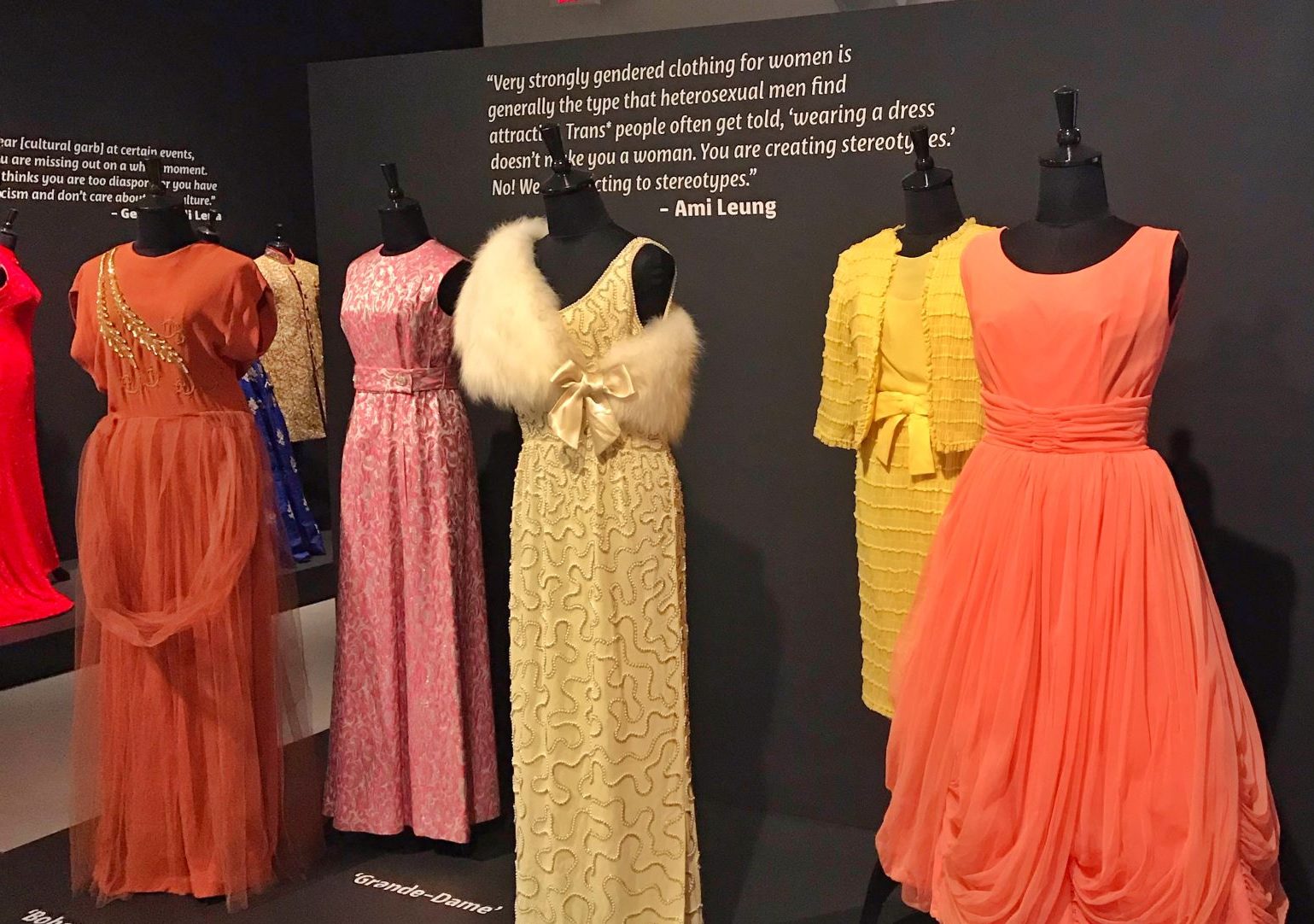Miriam El Abbassi | Arts Editor
Featured Image: A set of mannequins all dressed in evening gowns, and some of the labels ascribed to these aesthetics are “girly-girl,” “diva” and “cutesy.” | Courtesy of Miriam El Abbassi, Excalibur
The concept of identity and gender has, for a long time, existed within rigid boundaries. The binary (i.e solely male and female) has defined much of what society knows about gender and gender expression, as well as what is considered acceptable forms of expression for each.
The exhibition, Re:Framing Gender curated by Jason Cyrus, seeks to explore the different ways one may express their gender, and go beyond what is stereotypically considered masculine or feminine.
As soon as you enter the space, there is a white wall that has a list of terms that revolve around gender and sexuality, as well as their respective definitions. Some of these terms include: “hijra” (a legally recognized third gender specific to the South Asian subcontinent), “QTIPOC” (a queer, trans, and intersex people/person of colour), and “agender” (meaning “without gender”, and is used by someone who understands themselves to be genderless or gender neutral).
The rest of the exhibit consists of a lineup of mannequins dressed up in different kinds of attire, each with stereotypical labels placed beneath them. The lineup starts with a set of mannequins all dressed in evening gowns, and some of the labels ascribed to these aesthetics are “girly-girl,” “diva” and “cutesy.”
Click image for full picture. Courtesy of Miriam El Abbassi, Excalibur
There is also a quote that hangs above, describing how a hyper-feminine appearance (which is enforced by the clothes one wears) is generally what a heterosexual man finds attractive, and that when trans people adopt that certain aesthetic, they’re crucified for supposedly reinforcing gender stereotypes.
At the end of the lineup, there is a clothing rack displaying menswear in its various different forms. In this section, there is a focus on suits, and how that is ingrained into masculinity.
Some of the labels that sit beneath these pieces are “rebel,” “playboy,” “tycoon” and “jock.” The quote that hangs above describes how gender stereotypes are so ingrained, that if one were to slightly deviate from them, that would essentially mean “game over.
Located in the Joan and Martin Goldfarb Centre for Fine Arts room 275, Re:Framing Gender was scheduled to be on display until April 17. However, with the rise of the COVID-19 pandemic, the gallery is closed and it is currently unknown when the gallery, and the exhibit, will reopen.


